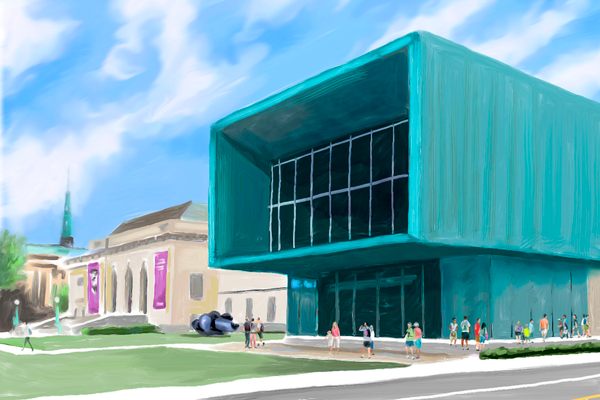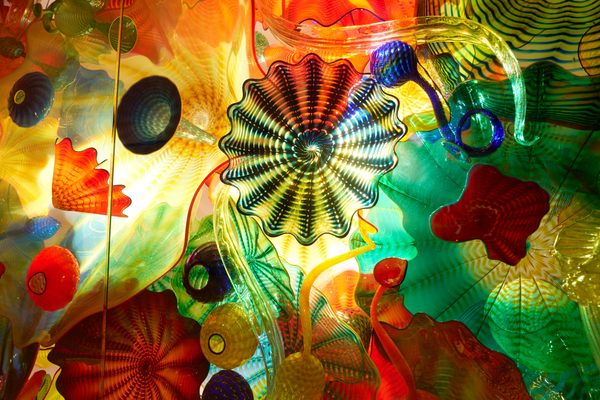Stairway to Heaven: Life After Death for the Mysterious Gustave Moreau
Staircase in the Musée Gustave Moreau (all photographs by the author unless indicated)
For Gustave Moreau, his greatest work may have been his death. He did not exhibit widely in his lifetime, and mostly stayed in solitude at his parents’ home on the Rue de la Rochefoucauld in the 9th arrondissement of Paris. Yet the symbolist artist planned an entire posthumous museum that would only open after he had departed this world.
Moreau died of stomach cancer on April 18, 1898, but he still feels very present in the Musée Gustave Moreau. From the salmon-painted walls to the salon-style assemblage of unfinished work, it is almost exactly as he intended it to be experienced. This January the museum reopened its three floors following a six-month closure to preserve much of it in this state, and this fall the six floors on the rez-de-chausée will open to visitors for the first time in over a decade (you can see updates on the renovation and expansion here). Even so, the modernization is very much absent as you wander the eclectic rooms under the gaze of nymphs and mythical creatures, haunted by the hand of one of the 19th century’s great artists, and great mysteries.
Gustave Moreau, “Le Poète voyageur” (via Musée Gustave Moreau)
When Moreau met his end, he bequeathed not just all the art in his home, including over 4,000 drawings, 1,200 paintings, and hundreds of watercolors, to France, but all the objects in it as they were. Lodged in heavy wood frames all over the walls are wide-eyed unicorns, otherworldly biblical scenes, mystical symbolism, and roaming classical gods. The art is both mesmerizing and arcane, and almost all halted mid-thought. Backgrounds are blank, figures are half-formed. You can flip through whole cabinets of drawing studies, where feathers, snakes, bodies, and symbols are sketched in careful detail, but never finished. He’d decided on establishing these fragments as a museum in 1892, and what’s left is a collision of family heirlooms and priceless art.
Elizabeth Gray Buck wrote in Exceptional Spaces: Essays in Performance and History: ”His plans comprise a performance of an absent artist and a present art object that bears his name — a performance that at once literally demands the ‘death-of-the-artist’ and yet also assures the absolute survival of his name — staged in his private home.” Moreau’s father was an architect, and in designing the museum he collaborated with Albert Lafon to add two “grand ateliers” to the top floor, linked by a strange and stunning spiral staircase.
The Gustave Moreau staircase
The staircase seems like a miracle, reminiscent in its shape of the spiral staircase at Loretto Chapel in Santa Fe, New Mexico. That American architectural oddity dates to 1878, and still is an unknown in how it was built with no central support, from a wood non-native to the area, and two 360 degree twists in its 20 feet. Moreau’s on the other hand is cast iron. With its tongue-like shape that slopes out of the ceiling it appears to have recently unraveled down to the floor.
On January 13, 1903, the Musée Gustave Moreau opened to the public for the first time. Gustave himself called it a ”small sentimental museum,” yet it feels like an artist, who was enamored with the esoteric, finding his own myth for himself in death. There is a small crowd of museums in Paris that were once private homes, and you can step inside Victor Hugo’s lodgings on the fashionable Place des Vosges or visit the room where Delacroix died on the quiet Rue de Furstemburg. Moreau on the other hand was no iconic figure in his life, his art swarmed with fantasy figures not finding much ground with his contemporaries.
André Breton, one of the surrealists later influenced by Moreau’s symbolist art, stated he ”dreamed of breaking into it at night with a lantern.” Perhaps Moreau knew in some way it was after his life that his work would find its resonance, and here in a space where the art is incomplete, but the museum is painstakingly designed, his spirit seems to guide you through.
Study in the apartment level of the museum
Heirlooms & art
Detail of a cabinet, with a cat photo and curios
Gustave Moreau, “Phaeton” (1878), oil on canvas (via Musée Gustave Moreau)
Gustave Moreau, “Self-Portrait” (1850), oil on canvas (via Musée Gustave Moreau)




































Follow us on Twitter to get the latest on the world's hidden wonders.
Like us on Facebook to get the latest on the world's hidden wonders.
Follow us on Twitter Like us on Facebook